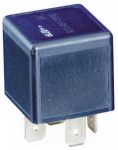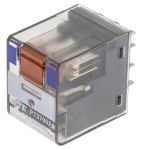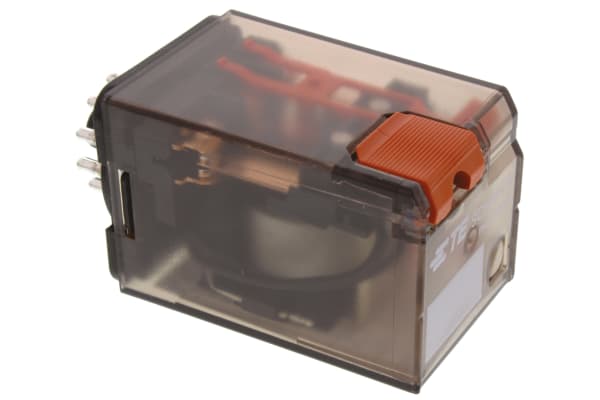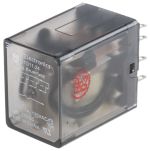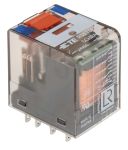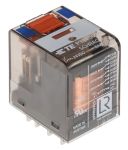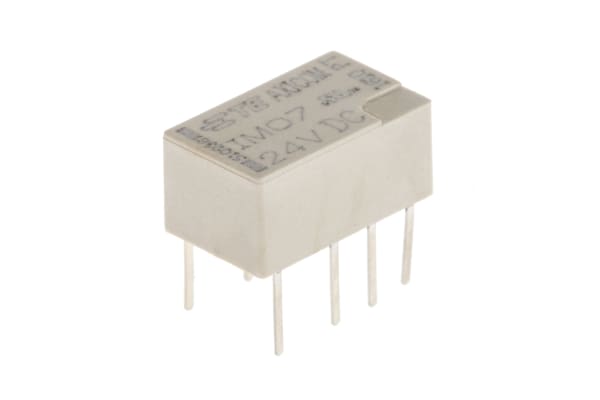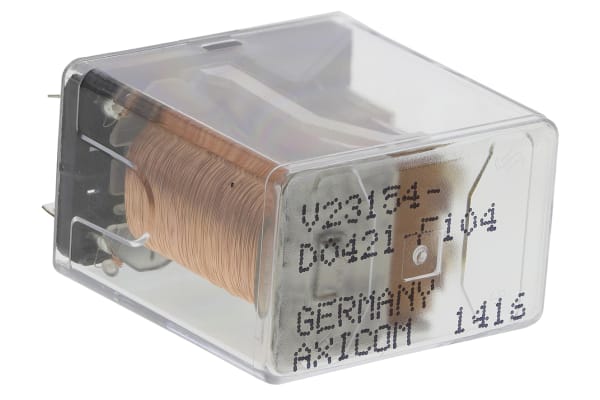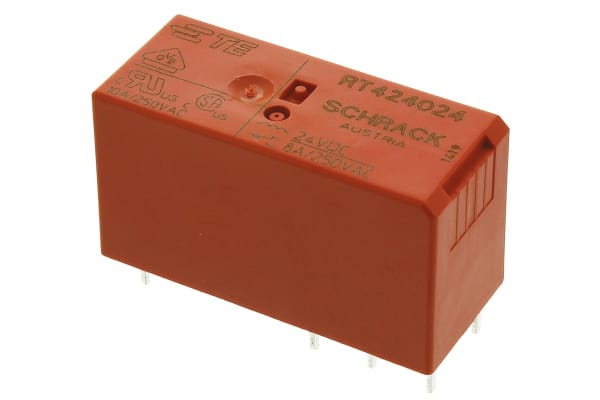Non-Latching Relays
Relays are electrical switches that are operated by electrical impulses with the primary function to open and close a circuit, they can also be referred to as industrial switches. There are 2 main types available, latching and non–latching relays.How do non-latching relays work?Non-latching relays are in a normally closed (NC) position and will stay in this state without power. When power passes through the circuit, the relay switched to a normally open (NO) position by using an internal coil to generate a magnetic force, holding this NO position. Once the current is turned off, it returns to the NC position. This makes non-latching relays well suited to push-button applications like keyboards and micro-controller input buttons.What are non-latching relays used for?Non-latching relays are highly durable and versatile components, making their performance long lasting and suitable for use in a wide range of applications, such as:Automotive enginesHousehold appliancesIndustrial machineryMedical equipmentTelecommunications equipmentWhat is the difference between latching and non-latching relays?Both types of relays in similar in design and function, however, a significant difference between them is that a latching relay will remain in the last position it when it was last powered, whereas a non-latching goes back to its normal position. This makes each more type of relay suitable for different applications. Considerations when selecting a relayWhen choosing a relay, it is important to consider a number of specifications to ensure it is fit for purpose, some factors include:Coil voltage – the required voltage to actuate the switching mechanism. If a voltage is too high this could damage the components, if it is too low then it will not actuate. Contact configuration – This is the state the contacts are in without power. For example SPST, single pole single throw.Contact material – the relay contacts are available in many materials that have certain properties. Common materials are gold, silver, tin oxide and nickel Coil power – the amount of power (watts) the coil operates at. This must match the power in the circuit for correct function. Coil resistance – the amount of resistance (ohms) in the circuit that the coil creates.
-
TE Connectivity, 24V dc Coil Automotive Relay SPDT, 60A Switching Current Plug In Single Pole, 1-1414167-0
IDR208,731.10 -
TE Connectivity, 24V dc Coil Automotive Relay SPNO, 25A Switching Current Panel Mount Single Pole, V23134J1053D642
IDR157,544.78 -
TE Connectivity, 24V dc Coil Automotive Relay SPNO, 40A Switching Current Plug In Single Pole, V23134B1053C642
IDR205,164.84 -
TE Connectivity, 24V dc Coil Non-Latching Relay 3PDT, 10A Switching Current PCB Mount, 3 Pole, PT370024 6-1419111-1
IDR147,685.12 -
TE Connectivity, 24V dc Coil Non-Latching Relay 3PDT, 10A Switching Current Plug In, 3 Pole, KUP-14D15-24
IDR380,960.48 -
TE Connectivity, 24V dc Coil Non-Latching Relay 3PDT, 10A Switching Current Plug In, 3 Pole, MT321024 7-1393091-0
IDR308,481.49 -
TE Connectivity, 24V dc Coil Non-Latching Relay 3PDT, 10A Switching Current Plug In, 3 Pole, MT323024 8-1393091-4
IDR364,073.19 -
TE Connectivity, 24V dc Coil Non-Latching Relay 4PDT, 2A Switching Current PCB Mount, 4 Pole, V23154D 421B110
IDR2,320,586.36 -
TE Connectivity, 24V dc Coil Non-Latching Relay 4PDT, 2A Switching Current PCB Mount, 4 Pole, V23154D 721B110
IDR1,954,100.70 -
TE Connectivity, 24V dc Coil Non-Latching Relay 4PDT, 3A Switching Current Plug In, 4 Pole, KHAU-17D11-24
IDR235,163.38 -
TE Connectivity, 24V dc Coil Non-Latching Relay 4PDT, 6A Switching Current DIN Rail, 4 Pole, PT5S7LC4 1415076-1
IDR468,648.52 -
TE Connectivity, 24V dc Coil Non-Latching Relay 4PDT, 6A Switching Current PCB Mount, 4 Pole, PT570L24 6-1415001-1
IDR128,804.92 -
TE Connectivity, 24V dc Coil Non-Latching Relay 4PDT, 6A Switching Current Plug In, 4 Pole, PT570024 1-1393154-2
IDR164,152.85 -
TE Connectivity, 24V dc Coil Non-Latching Relay DPDT, 12A Switching Current PCB Mount, 2 Pole, PT270024 4-1419111-2
IDR129,434.26 -
TE Connectivity, 24V dc Coil Non-Latching Relay DPDT, 2A Switching Current PCB Mount, 2 Pole, IM07TS
IDR60,101.97 -
TE Connectivity, 24V dc Coil Non-Latching Relay DPDT, 3A Switching Current PCB Mount, 2 Pole, V23105A5005A201
IDR67,549.16 -
TE Connectivity, 24V dc Coil Non-Latching Relay DPDT, 3A Switching Current PCB Mount, 2 Pole, V23105A5305A201
IDR71,220.31 -
TE Connectivity, 24V dc Coil Non-Latching Relay DPDT, 3A Switching Current PCB Mount, 2 Pole, V23105A5405A201
IDR79,506.62 -
TE Connectivity, 24V dc Coil Non-Latching Relay DPDT, 5A Switching Current PCB Mount, 2 Pole, V23154D 421F104
IDR2,276,742.34 -
TE Connectivity, 24V dc Coil Non-Latching Relay DPDT, 8A Switching Current PCB Mount, 2 Pole, RP421024
IDR280,056.30 -
TE Connectivity, 24V dc Coil Non-Latching Relay DPDT, 8A Switching Current PCB Mount, 2 Pole, RP821024
IDR271,455.32 -
TE Connectivity, 24V dc Coil Non-Latching Relay DPDT, 8A Switching Current PCB Mount, 2 Pole, RT424024 6-1393243-8
IDR635,528.51Box (1 Box of 20) -
TE Connectivity, 24V dc Coil Non-Latching Relay DPDT, 8A Switching Current PCB Mount, 2 Pole, RT424024 6-1393243-8
IDR88,841.83 -
TE Connectivity, 24V dc Coil Non-Latching Relay DPDT, 8A Switching Current PCB Mount, 2 Pole, RT425024
IDR147,894.90



